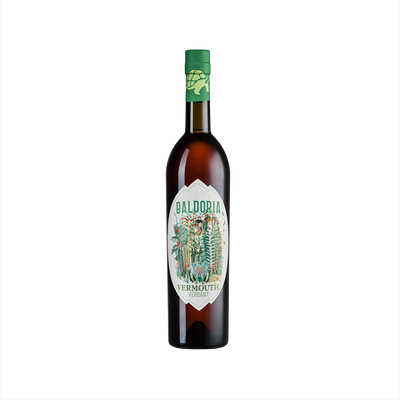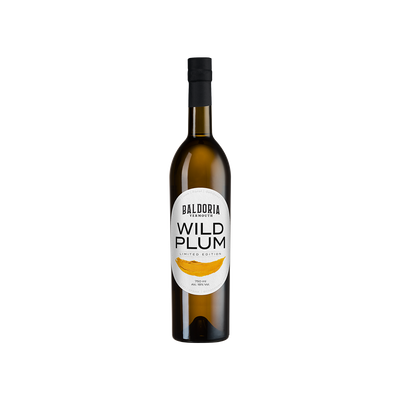Other Vermouth
What is Other Vermouth?
Other Vermouth represents the creative playground where producers break free from traditional sweet and dry classifications. These bottles showcase unique botanical blends, unconventional base wines, or innovative aging techniques that don't fit neatly into standard categories. What defines Other Vermouth is its willingness to push boundaries—think rosé vermouths, barrel-aged expressions, or bottles infused with exotic herbs and spices that create entirely new flavor profiles.
Learn More About Other Vermouth
What makes Other Vermouth unique?
Other Vermouth breaks free from the traditional sweet and dry classifications by exploring unconventional botanicals, aging techniques, and production methods that push the boundaries of what vermouth can be. These experimental vermouths might feature unusual ingredients like sea salt, exotic spices, or regional herbs that reflect their maker's terroir, while some producers age their blends in alternative vessels or employ unique fortification spirits beyond the standard grape brandy. This creative freedom allows Other Vermouth to occupy its own space in the category, offering flavors and experiences that simply don't fit into the conventional red or white vermouth playbook.
How is Other Vermouth made?
Other vermouth starts with a neutral white wine base that gets fortified with grape spirit or brandy to boost the alcohol content to around 15-18%. Producers then infuse this fortified wine with their secret blend of botanicals—think wormwood (the traditional star ingredient), plus herbs, spices, roots, and bark that might include anything from gentian and angelica to cardamom and orange peel. The mixture steeps for several weeks or months, gets filtered and sweetened to taste, then ages briefly before bottling to let all those complex flavors marry together.
How do you drink Other Vermouth?
Other vermouths shine brightest when served chilled and neat in small pours, allowing their unique botanical profiles to take center stage, though they're equally delightful over ice with a citrus twist. These distinctive fortified wines work beautifully in classic aperitif cocktails like Negronis, Boulevardiers, and Americanos, where their herbal complexity can complement rather than compete with other ingredients. The crisp, herbaceous nature of most vermouths makes them perfect for pre-dinner drinks during warmer months, while richer, spiced varieties find their home in cozy autumn and winter cocktails that call for deeper, more warming flavors.
How do I choose a good Other Vermouth?
Start by considering the cocktail you're making - lighter, herbaceous vermouths work beautifully in gin-based drinks, while richer, more oxidized styles complement whiskey cocktails perfectly. Taste different producers to find your preference for sweetness levels and botanical intensity, since these can vary dramatically between regions and makers. Don't be afraid to try vermouths from smaller producers or unusual grape bases, as these often offer the most interesting and distinctive flavors that can transform your cocktails from good to memorable.
Nutritional Information
Typical Calorie Range per Ounce: 30-45 calories
Typical Carbohydrate Range per Ounce: 3-6 grams
Typical Sugar Range per Ounce: 2-5 grams
Typically Gluten Free: Yes
Most vermouths are made from wine bases that are naturally gluten-free, but production methods and additives can vary between brands. Always check the specific product label or contact the manufacturer directly to confirm gluten-free status, especially if you have celiac disease or severe gluten sensitivity.
Scrolled this far? Your realm? Other Vermouth Trivia!
- California makes vermouth from fog-kissed grapes: Small producers in Sonoma and Mendocino counties create vermouths using grapes grown in coastal fog zones, where the cool, misty conditions produce wines with naturally higher acidity - perfect for vermouth production. The fog acts like nature's air conditioning, keeping the grapes from getting too ripe and losing their crisp backbone.
- Australian vermouth makers use native botanicals you can't pronounce: Distillers Down Under are infusing their vermouths with indigenous plants like lemon myrtle, Tasmanian pepperberry, and wattleseed. These native ingredients create flavor profiles completely unknown to European vermouth traditions - think eucalyptus-tinged aperitifs with spicy, almost smoky undertones.
- Japanese vermouth uses sake lees as a secret ingredient: Some craft vermouth producers in Japan incorporate sake kasu (the leftover rice mash from sake brewing) into their botanical blends. This adds an umami richness and subtle nuttiness that makes their vermouths particularly stunning in stirred cocktails - the kasu acts almost like a flavor amplifier.
- Vermont vermouth is made with maple sap, not syrup: A few New England producers tap their maple trees twice - once for syrup season, and again later for fresh sap to use in vermouth production. The raw sap adds mineral complexity and a gentle sweetness without the overwhelming maple flavor you'd expect, creating vermouths that taste like liquid forest floors.
- South African vermouth includes fynbos plants that survive wildfires: Producers in the Western Cape use indigenous fynbos vegetation - plants that have adapted to survive periodic brush fires. These fire-resistant botanicals, like wild rosemary and honey bush, create vermouths with an almost smoky, herbal intensity that's completely different from Mediterranean herb profiles.
Higher-proof spirits can be intense. Mix carefully, taste thoughtfully, and enjoy responsibly.
Gift message (optional)



